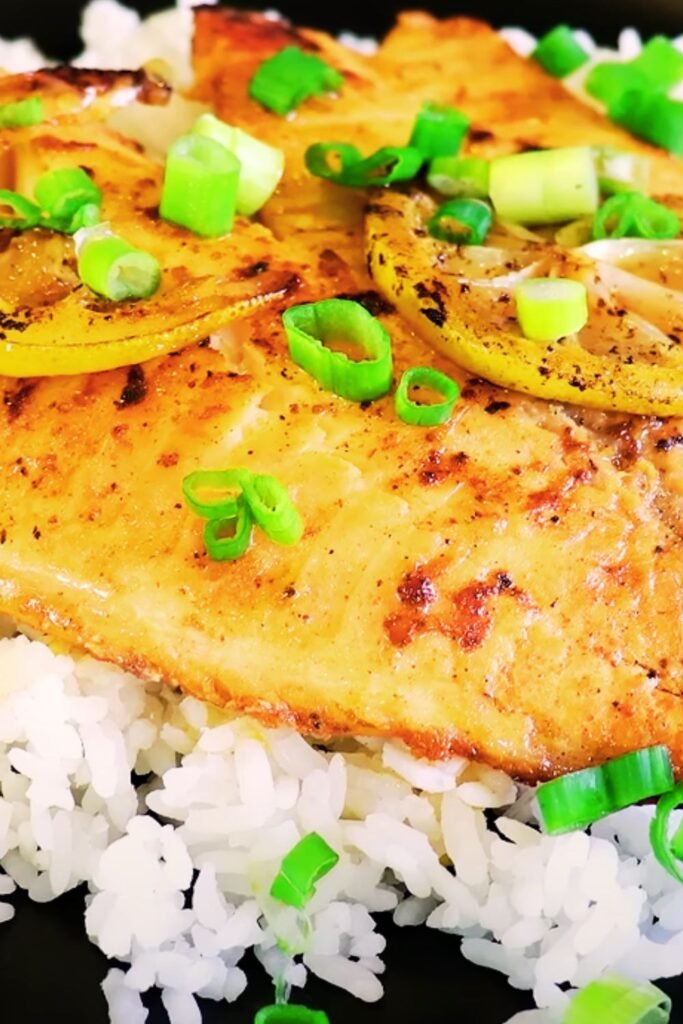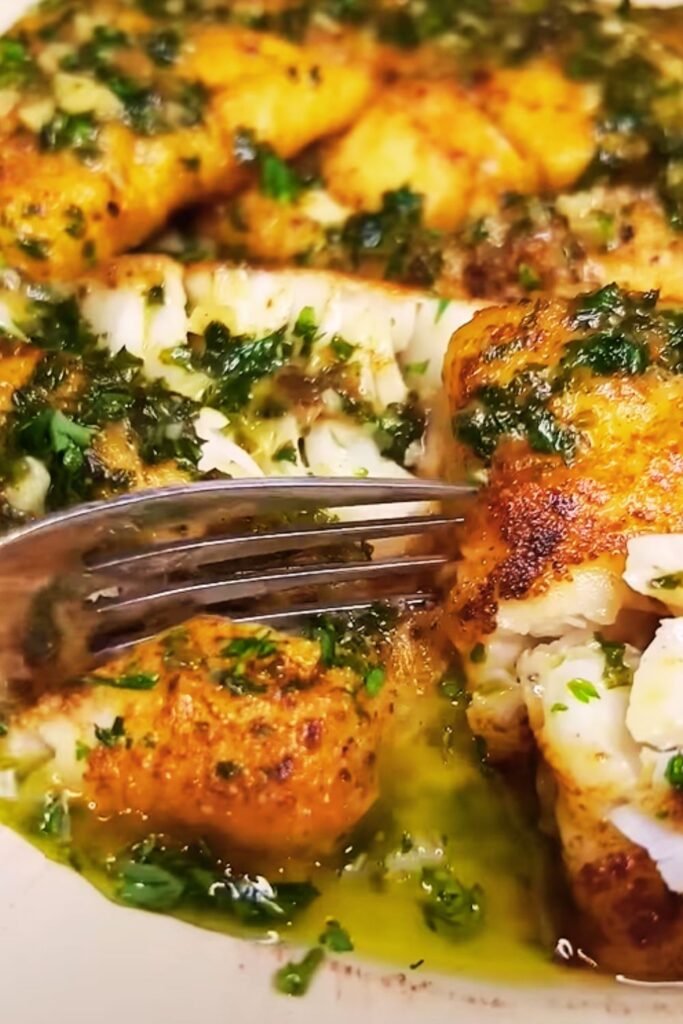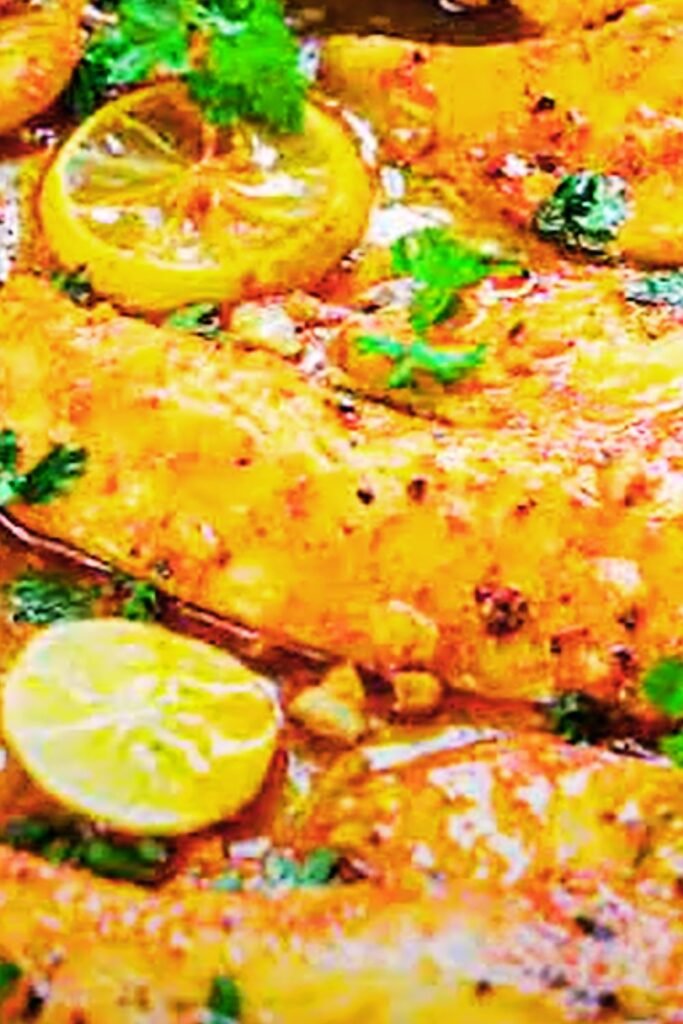Let me share something that has completely transformed my weeknight dinner routine: oven baked tilapia and veggies in lemon garlic sauce. I discovered this recipe during one of those hectic weeks when I needed something healthy, delicious, and incredibly easy to prepare. After countless attempts at perfecting it, I can confidently say this has become my go-to meal when I want to impress without the stress.
The beauty of this dish lies in its simplicity and the way all the flavors meld together in perfect harmony. The tender, flaky tilapia pairs beautifully with colorful vegetables, all bathed in a bright, zesty lemon garlic sauce that makes every bite burst with flavor. What I love most is that everything cooks together in one pan, which means minimal cleanup and maximum flavor infusion.
Why I Fell in Love with This Recipe
When I first tried making this dish, I was amazed at how restaurant-quality results could come from such simple ingredients. The lemon garlic sauce creates this incredible aromatic cloud that fills my kitchen, and the colors of the finished dish are absolutely stunning. I’ve served this to skeptical family members who claimed they “don’t like fish,” only to watch them ask for seconds.
The versatility is another reason this recipe has earned a permanent spot in my meal rotation. I can easily adapt it based on what vegetables I have on hand, and the cooking method ensures everything comes out perfectly tender without any guesswork.
Essential Ingredients Breakdown
Fish Selection
Tilapia fillets: I specifically choose tilapia for this recipe because of its mild flavor and firm texture that holds up beautifully during baking. The fillets should be fresh, with a clean smell and firm flesh.
Thickness considerations: I always look for fillets that are approximately 6-8 ounces each and about ¾ inch thick. This ensures even cooking throughout.
Vegetable Medley
Zucchini: I cut mine into half-moon slices about ½ inch thick. Zucchini adds a lovely mild flavor and absorbs the lemon garlic sauce beautifully.
Bell peppers: I use a mix of red, yellow, and orange peppers for visual appeal and varying levels of sweetness. Green peppers work too, but I prefer the sweeter varieties.
Cherry tomatoes: These little gems burst with flavor during baking and add a wonderful pop of color and acidity to balance the dish.
Red onion: Sliced thin, red onion becomes sweet and mellow when roasted, adding depth to the overall flavor profile.
The Magic Lemon Garlic Sauce
Fresh lemons: I never use bottled lemon juice for this recipe. Fresh lemons provide the bright, clean acidity that makes this dish shine.
Garlic: I use about 4-5 large cloves, minced fine. The garlic mellows during baking but still provides that aromatic punch.
Olive oil: Extra virgin olive oil is my preference as it adds richness and helps carry all the flavors.
Fresh herbs: I typically use fresh thyme and parsley, though rosemary works wonderfully too.

Detailed Preparation Method
Step 1: Preparation and Setup
I always start by preheating my oven to 425°F (220°C). This temperature is perfect for cooking the fish through while getting a slight caramelization on the vegetables. While the oven heats, I line a large baking sheet with parchment paper – this makes cleanup so much easier.
Step 2: Vegetable Preparation
I wash and cut all my vegetables first. The key is cutting everything into similar-sized pieces so they cook evenly. My zucchini gets sliced into half-moons, bell peppers into strips about 1 inch wide, cherry tomatoes get halved, and the red onion is sliced into thin crescents.
Step 3: Creating the Lemon Garlic Sauce
In a large bowl, I whisk together the juice of two large lemons, minced garlic, olive oil, salt, pepper, and fresh herbs. I taste this mixture and adjust the seasoning – it should be bright and well-seasoned since it’s flavoring the entire dish.
Step 4: Assembly Process
I toss all the prepared vegetables with about two-thirds of the lemon garlic sauce, ensuring everything is well coated. Then I arrange them on one side of the prepared baking sheet, creating space for the fish fillets.
Step 5: Fish Preparation and Placement
I pat the tilapia fillets completely dry with paper towels – this is crucial for getting a good sear. I season both sides with salt and pepper, then place them on the baking sheet alongside the vegetables. I brush the remaining lemon garlic sauce over the fish fillets.
Cooking Process and Timing
| Cooking Stage | Time | Temperature | Key Indicators |
|---|---|---|---|
| Initial Bake | 12-15 minutes | 425°F | Vegetables starting to soften |
| Fish Check | 15-18 minutes | 425°F | Fish flakes easily with fork |
| Final Stage | 2-3 minutes | 425°F | Light golden color on edges |
| Rest Period | 5 minutes | Room temp | Juices redistribute |
The total cooking time usually ranges from 15-20 minutes, depending on the thickness of the fish fillets. I’ve learned to check the fish at the 15-minute mark because overcooking can make tilapia tough and dry.

Nutritional Benefits and Health Considerations
Protein Powerhouse
Tilapia is an excellent source of lean protein, providing approximately 26 grams per 3.5-ounce serving. This makes the dish perfect for anyone looking to increase their protein intake while keeping calories in check.
Vitamin and Mineral Content
The vegetable medley provides a wide array of essential nutrients:
Bell peppers: Rich in vitamin C, vitamin A, and antioxidants Zucchini: Good source of potassium, vitamin A, and fiber Tomatoes: High in lycopene, vitamin C, and folate Garlic and onions: Contains compounds with anti-inflammatory properties
Nutritional Breakdown Per Serving
| Nutrient | Amount | % Daily Value |
|---|---|---|
| Calories | 285 | 14% |
| Protein | 28g | 56% |
| Carbohydrates | 12g | 4% |
| Fat | 14g | 22% |
| Fiber | 3g | 12% |
| Vitamin C | 85mg | 95% |
| Potassium | 580mg | 16% |
Flavor Variations and Customizations
Mediterranean Style
I sometimes add olives, capers, and a sprinkle of feta cheese during the last few minutes of cooking. This creates a wonderful Mediterranean flavor profile that transports me straight to the Greek islands.
Asian-Inspired Version
For an Asian twist, I substitute lime juice for lemon and add fresh ginger, soy sauce, and a touch of sesame oil. I often include snap peas and baby corn for different textures.
Herb-Crusted Variation
I create an herb crust by mixing breadcrumbs with fresh parsley, dill, and grated Parmesan cheese. I press this mixture onto the fish fillets before baking for added texture and flavor.
Spicy Kick Option
When I want some heat, I add red pepper flakes to the lemon garlic sauce and include sliced jalapeños with the vegetables. The heat balances beautifully with the bright lemon flavors.
Common Mistakes and How I Avoid Them
Overcrowding the Pan
I learned this lesson the hard way – when vegetables are too crowded, they steam rather than roast. I now use two pans if necessary to ensure proper browning and caramelization.
Not Drying the Fish
Wet fish won’t sear properly and can make the entire dish watery. I always pat the fillets completely dry and let them sit at room temperature for about 10 minutes before cooking.
Underseasoning
Because this is a simple dish, proper seasoning is crucial. I taste the sauce before using it and adjust the salt, pepper, and lemon juice as needed.
Timing Issues
Different vegetables cook at different rates. I’ve found that starting with the vegetables that take longer (like onions and peppers) and adding quicker-cooking items (like tomatoes) a few minutes later works best.
Storage and Meal Prep Tips
Refrigeration Guidelines
Leftover tilapia and vegetables keep well in the refrigerator for up to 3 days. I store them in airtight containers, keeping the fish and vegetables together to maintain flavor integration.
Freezing Considerations
While I can freeze the cooked dish for up to 2 months, I’ve noticed the texture of the vegetables changes slightly upon thawing. The fish, however, freezes and reheats quite well.
Meal Prep Strategy
I often prepare double batches on Sunday, portioning them into individual containers for easy weekday lunches. The flavors actually improve overnight as everything continues to meld together.
Reheating Methods
For best results, I reheat portions in a 350°F oven for about 10 minutes. Microwave reheating works too, but I cover the dish with a damp paper towel to prevent drying out.
Serving Suggestions and Pairings

Grain Companions
I love serving this dish over fluffy quinoa or brown rice. The grains soak up the delicious lemon garlic sauce, making every bite flavorful. Wild rice pilaf is another favorite pairing that adds nutty flavors and interesting texture.
Bread Options
Crusty sourdough bread or warm focaccia makes an excellent accompaniment for soaking up any remaining sauce. I sometimes make garlic bread using the same herb mixture from the recipe.
Salad Pairings
A simple arugula salad with a light vinaigrette complements the richness of the dish without competing with the flavors. I also enjoy a cucumber and tomato salad dressed with olive oil and fresh herbs.
Sauce Variations for Serving
Sometimes I make extra lemon garlic sauce to drizzle over the finished dish. I’ve also created a yogurt-based sauce with lemon and herbs that provides a cooling contrast to the warm vegetables.
Advanced Techniques and Professional Tips
Temperature Control
I use an instant-read thermometer to ensure the fish reaches an internal temperature of 145°F. This guarantees food safety while preventing overcooking.
Pan Selection
I prefer using a rimmed baking sheet or large roasting pan. The rim prevents any juices from spilling, and the large surface area ensures even cooking without overcrowding.
Layering Strategy
I’ve discovered that placing the fish on top of some of the vegetables (rather than beside them) creates a sort of bed that keeps the fillets moist while allowing the vegetables underneath to caramelize beautifully.
Sauce Distribution
Rather than just drizzling the sauce over everything, I use a pastry brush to ensure even coverage on the fish fillets. This creates a more consistent flavor and better browning.
Troubleshooting Guide
| Problem | Cause | Solution |
|---|---|---|
| Dry fish | Overcooked or too high heat | Reduce cooking time, check at 12 minutes |
| Soggy vegetables | Overcrowded pan or too much sauce | Use larger pan, reduce liquid |
| Bland flavor | Underseasoned or old spices | Season generously, use fresh herbs |
| Uneven cooking | Different sized pieces | Cut vegetables uniformly |
| Burning edges | Too high temperature | Reduce to 400°F, cover with foil |
Seasonal Adaptations
Spring Version
In spring, I incorporate asparagus, fresh peas, and baby carrots. The tender vegetables cook quickly and pair beautifully with the lemon garlic flavors.
Summer Abundance
Summer brings an explosion of options: eggplant, summer squash, fresh corn kernels, and peak-season tomatoes all work wonderfully in this recipe.
Fall Comfort
During autumn, I add heartier vegetables like butternut squash, Brussels sprouts, and sweet potatoes. These require a slightly longer cooking time but create a more substantial, warming dish.
Winter Warming
In winter, I use root vegetables like parsnips, carrots, and turnips. I often add a splash of white wine to the sauce for extra depth and warmth.
Equipment Recommendations
Essential Tools
A large rimmed baking sheet is absolutely crucial for this recipe. I prefer heavy-duty aluminum pans that conduct heat evenly. A good chef’s knife makes vegetable preparation much faster and more enjoyable.
Nice-to-Have Items
A fish spatula makes serving much easier and helps keep the fillets intact. An instant-read thermometer takes the guesswork out of doneness, especially when I’m trying new vegetable combinations that might affect cooking times.
Maintenance Tips
I always line my baking sheets with parchment paper, which makes cleanup effortless and prevents sticking. For the pans I use regularly, I maintain them by hand-washing and drying immediately to prevent water spots and maintain their non-stick properties.
Questions and Answers
Q: Can I use frozen tilapia fillets for this recipe? I can definitely use frozen tilapia, but I make sure to thaw them completely first. I place the frozen fillets in the refrigerator overnight, then pat them thoroughly dry before seasoning. The key is removing as much moisture as possible to prevent the dish from becoming watery.
Q: What other types of fish work well with this preparation method? I’ve had great success with cod, halibut, and mahi-mahi using the same technique. Salmon works too, though I reduce the cooking time since it’s a fattier fish. The key is choosing firm, white fish that won’t fall apart during baking.
Q: How do I prevent the vegetables from becoming mushy? The secret is cutting vegetables to the right size and not overcooking them. I cut denser vegetables like bell peppers slightly smaller than softer ones like zucchini. Also, I check the vegetables at the 12-minute mark – they should be tender but still have a slight bite.
Q: Can I prepare this dish ahead of time? I often prep all the vegetables and make the sauce earlier in the day, storing them separately in the refrigerator. However, I don’t assemble everything until I’m ready to cook, as the acid in the lemon juice can start to “cook” the fish if left too long.
Q: What should I do if my family doesn’t like certain vegetables? The beauty of this recipe is its flexibility. I customize it based on preferences – sometimes I make individual portions with different vegetable combinations. Bell peppers, zucchini, and cherry tomatoes are usually crowd-pleasers, while I might add more adventurous vegetables to my own portion.
Q: How can I tell when the fish is perfectly cooked? Properly cooked tilapia should flake easily when tested with a fork at the thickest part. The flesh should be opaque throughout and reach an internal temperature of 145°F. If I’m unsure, I prefer to slightly undercook rather than overcook, as the residual heat will finish the job.
Q: Can I make this recipe in a smaller quantity for one or two people? Absolutely! I scale down all ingredients proportionally and use a smaller baking sheet. The cooking time remains about the same, but I start checking for doneness a few minutes earlier since smaller fillets cook faster.
Q: What’s the best way to reheat leftovers? I prefer reheating in the oven at 350°F for about 8-10 minutes, covered with foil to prevent drying out. The microwave works too – I use 50% power and heat in 30-second intervals, checking frequently to avoid overcooking.
Q: Can I add cheese to this recipe? I sometimes sprinkle a small amount of Parmesan cheese over the vegetables during the last 5 minutes of cooking. Feta cheese also works wonderfully, especially in the Mediterranean variation. I add it during the final few minutes so it doesn’t burn.
Q: What wine pairs well with this dish? While I don’t include alcoholic beverages in my serving suggestions, I can tell you that the bright, lemony flavors in this dish pair beautifully with sparkling water infused with lemon or lime, or even a refreshing herbed iced tea.
This oven baked tilapia and veggies in lemon garlic sauce has truly revolutionized my approach to weeknight dinners. It’s proof that simple ingredients, when treated with care and combined thoughtfully, can create something truly special. The dish offers restaurant-quality flavors with home-cook simplicity, making it perfect for both casual family dinners and entertaining guests. I hope you enjoy making this recipe as much as I do – it’s become one of my most requested dishes, and I have a feeling it will become a favorite in your kitchen too.